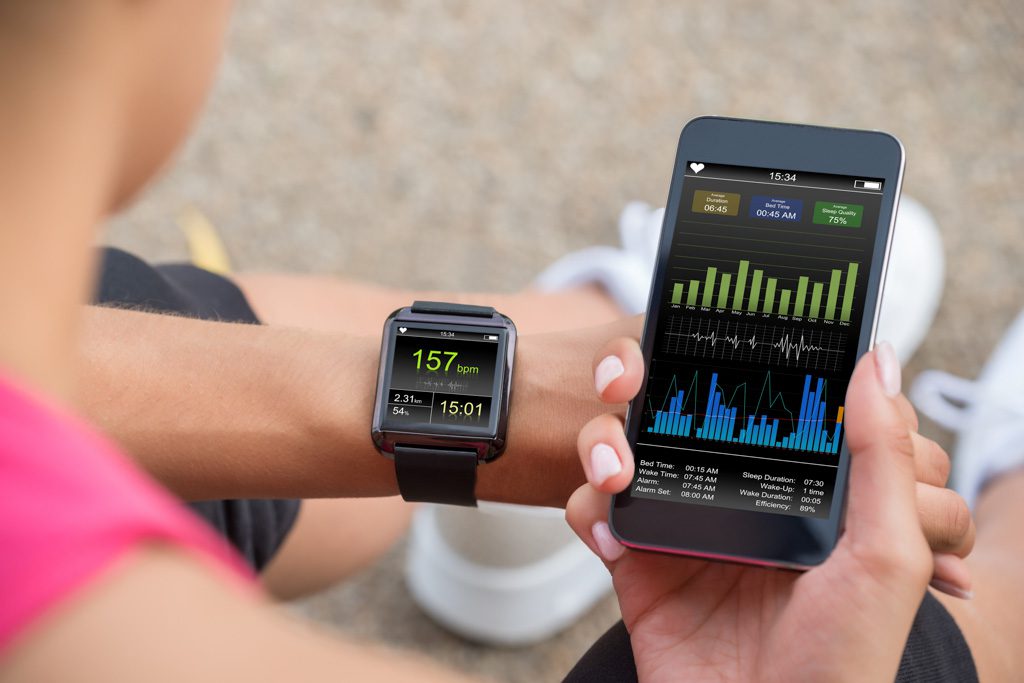Any fitness industry analysis has to recognize the effects of the COVID-19 pandemic.
From early 2020 to the spring of 2021, the pandemic rocked most industries to their core, but it had extreme effects on the fitness industry. Mandatory lockdowns forced gyms and fitness clubs to join restaurants, bars and other service businesses in shutting down indefinitely, causing crippling losses in revenue and resources such as staff.
Now that the fitness industry is in the recovery stages, gym owners worldwide are trying to adjust to the fundamental changes brought on by COVID-19, including the weakening of their influence over the exercising consumer. In this fitness industry analysis, we will discuss the pandemic’s influence and the three most significant takeaways affecting the current state of the fitness industry.
COVID-19’s Impact on the Fitness Industry
In 2020, most gyms and fitness clubs were forced to close sooner than bars and restaurants, which were in most cases able to preserve some revenue with takeout or delivery service. Some gyms were shuttered due to government mandates, and others closed voluntarily before orders due to public pressure or a desire to help “flatten the curve” of virus spread.
Until that time, the global fitness industry had benefited from significant growth over the previous 10 years, and the U.S. segment had grown for 10 years straight. But the worldwide closures resulted in an estimated 44 percent decline in revenue, from $96.7 billion in 2019 to $54.2 billion in 2021. In the U.S., the sector saw a 52 percent decline in revenue in 2020.

COVID-19’s Impact on Gyms
Around 40,000 U.S. gyms and fitness clubs were operating in 2019 (with approximately 201,000 clubs in the world). The shutdown cost the U.S. fitness industry $29.2 billion in revenue from March 2020 to June 2021. Unfortunately, Congress did not include the fitness industry in economic relief packages. This fact is part of the reason 22 percent of American gyms closed permanently.
Worldwide, restrictions varied from capacity limits on gyms to complete lockdowns and stay-at-home orders. Some governments didn’t allow gyms to provide outside exercise facilities or classes, and in other areas it was far too cold to do so. So, aside from gyms that offered online services, the shutdown left most gyms—especially larger corporate facilities—without a revenue source while fixed expenses remained.
Covid-19’s Impact on Fitness Industry Professionals
In the U.S., mandated closures caused 1.5 million fitness professionals to lose their jobs. These individuals accounted for 47 percent of the fitness labor force. According to PTDC.com, 58 percent of trainers lost some income or all of it. Unless they trained clients online, many coaches had no source of income except unemployment. In some countries, government benefits were extended to affected workers, but employment status—contractor vs. employee—prevented some from accessing certain benefits.
A catastrophic pandemic put many adults in a position where they could not provide for themselves for the first time in their lives. This type of emotional blow can have lasting effects, and it forced many people to jump out of struggling industries in order to survive. No one knows if they’ll come back.
Impact on Fitness Industry Consumers
Few people avoided the dire consequences caused by the sudden appearance of the coronavirus pandemic. In short order, hundreds of thousands of people found themselves filing for unemployment benefits and standing in food lines. In addition, school and daycare center closures forced many workers to choose between working and staying home to take care of their kids. Some tried to balance both, and stress levels rose.
Except for an occasional trip to the supermarket, most people primarily operated within the confines of their homes. Gyms, yoga studios, ballparks, beaches and places where two or more could gather were often off limits. As a result, most people spent the bulk of 2020 holed up in their homes without much opportunity to be active. Instead, most social engagements occurred on meeting apps like Zoom.
In a 2021 study, the American Psychological Association reported that 42 percent of U.S. adults gained weight during the pandemic, with an average gain of a whopping 29 lb. Sciencedaily.com reported that excessive alcohol consumption was up by 21 percent in the pandemic.
Some people combated the boredom, blues and extra pounds of body weight with a brisk walk or virtual exercise classes. However, because about 80 percent of people are mostly sedentary under normal circumstances, people likely grew more inactive without standard activities including going to work, running errands, and playing golf or other recreational sports. Along with the inactivity, the CDC warns that a person’s mental health can decline from stress, anxiety, loneliness, lack of social interaction and poor diet.
Overall, health and fitness were under assault over the last two years, and many people are in worse shape that they were in 2019. That’s a shame, but it also represents an opportunity for gym owners to offer help to people who want to improve their conditions.

The Recovery
Now that the COVID-19 mandates are gone in most areas and businesses are returning to a degree of normalcy, the fitness industry has experienced some surprising events. But three popular trends are disrupting the status quo for most gyms and fitness facilities, and they have demonstrated the staying power necessary to influence fitness industry strategies. As a result, these interesting dynamics provide the framework for the three key takeaways from this fitness industry analysis.
But first, let’s look at the causes and effects.
Why Gyms and Fitness Clubs are Recovering Nicely
Gyms and wellness facilities have long had a monopoly over fitness consumers. Before the lockdown, most people joined a gym, Pilates studio, CrossFit affiliate or yoga studio when they wanted to get in shape. But the pandemic changed this dynamic by causing consumers to seek gym alternatives during the lockdown.
As a result, the global exercise industry faced a direct challenge to its dominance. However, gyms all over the world have overcome the hardships and threats to stage a strong recovery. Here’s how and why gyms are returning to top form.
During the Lockdown
Because only a small percentage of gyms offered digital fitness options, many exercise enthusiasts sought alternatives, such as in-home fitness equipment, mobile fitness apps and virtual workouts. The outlook for gyms at that time was dire, Most surveys indicated that gym industry recovery would be a rough journey. For example, one 2020 fitness industry analysis survey showed that 50.1 percent of American respondents expressed doubt about returning to their gyms. Worldwide, 46.7 percent of respondents said they would not go back to a gym.

The Resurgence of Gyms
When the COVID-19 restrictions disappeared and gyms resumed complete services, a remarkable resurgence of returning gym members was seen in early 2021. By May, CNBC research revealed that overall gym traffic was up to 83 percent of pre-pandemic levels, and interest in at-home exercise had reached an all-time pandemic low. Consequently, Peloton stock posted a greater-than-expected loss in the first quarter of 2021.
In the realm of large chain gyms, Planet Fitness is one of the shining stars when it comes to rebounding gyms. As of early November 2021, the gym had reclaimed 97 percent of its pre-COVID membership maximum. This result means that 15 million of its 15.5 million pre-pandemic members had abandoned their home gyms and workouts to return to their exercise venue of choice. Or the company acquired new clients to replace almost all of those who stayed in the garage or basement.
Even sweeter is the fact that total revenue of $154.3 million represents a 46.4 percent leap from the same period in 2020. In addition, Planet Fitness logged its highest third-quarter net member growth in club history.
As for microgyms, a 2021 Two-Brain survey revealed that 53 percent of respondents had returned to pre-COVID profitability levels, and 55 percent had returned to pre-COVID revenue levels (for mentorship clients the numbers were 71 and 74 percent, respectively).
Around May 2021, online searches for “gyms near me” increased in astonishing numbers as well. It was apparent in late spring 2021 that bricks-and-mortar gyms were bouncing back nicely. Throughout the fitness industry’s history, nothing had ever challenged fitness consumers’ loyalty to their gym like the COVID-19 shutdowns. But more factors contributed the impressive recovery of most gyms.
The Reasons Behind Gyms’ Fast Recovery
The Maturing of Gen Z
According to Two Brain’s data, the second largest group of microgym clients is between 21 and 30. An increasing number of Generation Z members are poised to enter this bracket. Gen Z is composed of individuals born between 1997 and 2012, so the youngest of Gen Z is 9 or 10 years old, and the oldest is 24 or 25.
This generational shift is promising for gyms because Gen Z’s are among the most likely to join a fitness club.
Working Out at Home Is a Seasonal Fad
Other than during the COVID shutdowns, working out at home has always been a niche activity generally tied to New Year’s Resolutions. Garage sales and resale sites have always been full of unused fitness equipment. As such, most exercise equipment companies pass on this seasonal-fad market. Few have had the sensational success that Peloton has enjoyed.
Now, with restrictions falling away and people returning to gyms, the in-home exercise market is less of a threat to gym membership. This is even more true for gyms that offer group or personal coaching instead of just facility access.
People Need People
Social isolation had significant psychological consequences over the last two years. For many, the deep feelings of isolation and loneliness resulted in adverse emotional and physical effects. Research has shown that gyms are excellent social motivators because they:
- Provide a sense of accountability.
- Offer social interaction among members and staff.
- Provide a sense of belonging.
- Furnish a controlled, positive environment that promotes civil behavior.
With people emerging from their homes after months of isolation, a gym is a prime place for them to rebuild and create the social connections that have been missing from their lives.
Three Strong Trends Affecting the Fitness Industry
While it is apparent that bricks-and-mortar gyms have bright futures, the pandemic sparked several trends that fitness merchants must be aware of and accommodate if they want to prosper. In addition, gyms and fitness facilities must be more agile than ever to compete in a rapidly evolving industry.
Here are the most significant takeaways from our fitness industry analysis.

1. Fitness App Technology Is Here to Stay
Fitness app technology has been gaining popularity over the past decade. Still, the pandemic created a breakout period for downloadable fitness apps on cell phones and other electronic devices. During the first two quarters of 2020, downloads of fitness apps increased by 46 percent globally.
Many people use fitness-app products to give their lives structure and balance and increase motivation. The two main health-oriented app categories are wellness and fitness. The apps in these categories might offer things like a 10-minute meditation or a sleep tracker. Among the top app brands in this category are:
- Calm (meditation)
- Headspace (meditation)
- Sleep Cycle (includes sleep analysis and a wake-up feature)
- MyFitnessPal (nutrition and food tracking)
Dominating the wearable device markets, smart watches such as WHOOP and FitBit track the users’ sleep, recovery, training and more. According to the Pew Research Center, one in five Americans owns a fitness tracker or smart watch. They have effectively replaced paper exercise notepads for good.
The pandemic gave the fitness app industry a significant boost, but the growth rate is not showing any signs of slowing down. For example, industry researchers expect the global market size to increase at a compound annual growth rate of 17.6 percent between 2022 and 2030. As a result, many gym owners are adjusting their business models to integrate the fitness-app experience with their service packages.
For example, some Two-Brain clients who offer nutrition services use the MyFitnessPal app so they can quickly review a client’s food intake—and the clients can see what the coach is eating, too.

2. AI Technology in the Fitness Industry
While gyms and fitness facilities are regaining dominance over the at-home fitness industry, the emergence of artificial intelligence (AI) instructional aids is a trend that deserves attention. For example, high-tech clothing companies use machine learning and AI to guide and coach users through their workouts with the data gathered from tiny sensors in their clothing.
These AI products combine input from a large pool of fitness experts to benefit millions of users with the most effective and up-to-date techniques and information for exercise improvement. For example, several apparel manufacturers install Asensei sensors in their workout clothing so apps and “Connected Fitness products” can provide coaching—they’ll actually monitor your movement and posture. Programs transform the feedback from sensors to provide detailed real-time instruction on the correct ways to position and move your body during an exercise routine.
Sensoria provides another version of wearable AI technology that monitors your running motions to improve running speed, form and endurance. The program uses sensors embedded in a “smart sock” to retrieve data from the apparel to report cadence, steps and heart rate.
Mirror products and similar systems use integrated “smart weights” to provide form corrections and track movements for at-home users.
Many inexpensive apps feature AI algorithms. For example, Freeletics and FitnessAI use your information to create personalized workouts from databases with millions of workout options. Other apps use AI algorithms to coach runners or weight-loss customers.
Rather than directly competing with fitness apps and AI technology, many gym owners find ways to integrate these products into their service packages. For example, trainers and instructors can use AI-driven wearables and apps for tracking their clients’ progress in workouts outside their supervision. Similarly, coaches might prescribe a combination of in-person training and at-home or on-the-road sessions provided by apps or devices.
Can a computer replace a skilled human coach or replicate deep coach-client relationships? No. But wise trainers find ways to use popular technology to serve their clients to an even greater degree.

3. Remote Live-Stream Workouts
Though microgym owners had more success with online coaching than Zoom workouts or live streams, larger gyms that swiftly adapted to remote workouts during the lockdown enjoyed success. Live-stream workout users went from 7 percent of consumers in 2019 to over 80 percent in 2020. Also, with a projected compound annual growth rate of 33 percent from 2021 to 2028, the demand for digital fitness is only getting stronger.
For some gym owners, the internet has become an excellent option for providing remote access to exercise classes or offering personal training sessions. It’s also been beneficial for personal trainers. In a 2020 Personal Training Development Center survey, 62 percent of trainers said they would work online and in person once the pandemic is over.
Fortë and similar companies deliver live-streaming workout classes on a global scale. As a result, consumers who can’t physically attend classes at the gym can participate in live or on-demand fitness classes in gyms connected to the host system. Even in the home environment, exercise customers prefer the authenticity of live classes over recorded ones, but a recorded class will still get some people moving.
As an increasing number of gyms integrate remote workout options into their class schedules, consumers—and trainers—will have more options. But wise microgym owners will remember that digital options won’t replace a personal coach.
How These Fitness Trends Affect the Fitness Industry
Apps and devices, AI, and online gym options have uprooted the business-as-usual standard of gyms and fitness facilities. Considering that tech-oriented Millennials and Gen Z’s are becoming the majority of gym customers, forward-thinking fitness business owners can provide hybrid establishments with omnichannel ways to integrate apps and virtual services to improve their members’ experiences. Or they can use select technology to enhance the high-touch coaching services they provide.
While some will fear the “rise of the machines,” smart coaches will apply tech to help members manage their workout, diet and wellness regimens seamlessly so they get fit fast.
Final Thoughts About This Fitness Industry Analysis
The pandemic lockdown of 2020 put significant and sometimes unbearable strain on most people and businesses. However, the high-tech trends that blossomed during this period continue to serve as a catalyst for growth in the fitness industry by influencing gym owners to strive for a higher level of customer service.
By offering more alternatives—such as virtual exercise classes, online coaching and wellness coaching—gyms can attract people who usually wouldn’t join. Also, accommodating members with AI and fitness apps will give them a more active role in achieving their fitness goals.
Finally, integrating technology into a deeply personalized coaching practice can improve the client experience, provide coaches with more detailed metrics and help clients see progress.
The pandemic might have been a huge challenge for the fitness industry, but it’s put new tools in the box, and fitness pros would be wise to learn how to use them to improve their services.
About the Author: John Burson successfully ran a personal training business for over 20 years, and he has written volumes of published articles on business entrepreneurship, finance and the fitness industry.

